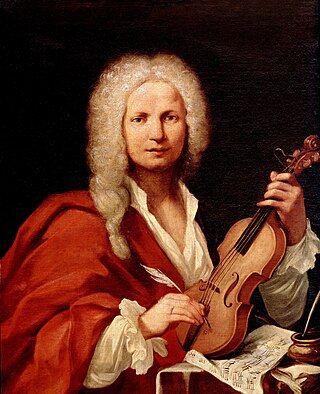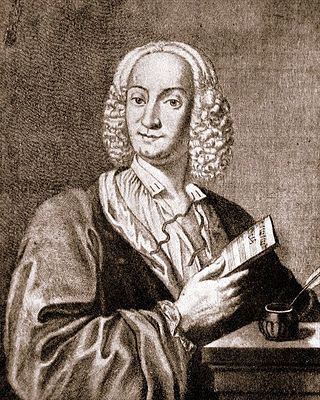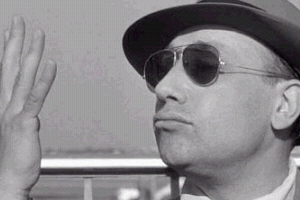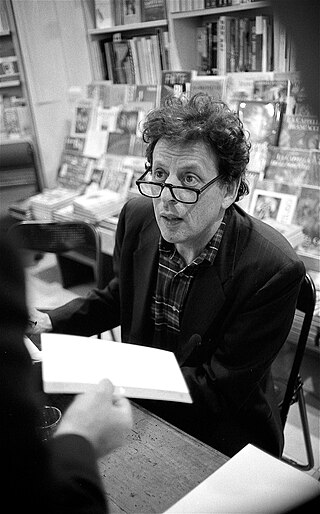
Antonio Lucio Vivaldi was an Italian composer, virtuoso violinist and impresario of Baroque music. Along with Johann Sebastian Bach and George Frideric Handel, Vivaldi ranks amongst the greatest Baroque composers and his influence during his lifetime was widespread across Europe, giving origin to many imitators and admirers. He pioneered many developments in orchestration, violin technique and programmatic music. He consolidated the emerging concerto form into a widely accepted and followed idiom.

Jean Maurice Eugène Clément Cocteau was a French poet, playwright, novelist, designer, film director, visual artist and critic. He was one of the foremost artists of the surrealist, avant-garde, and Dadaist movements and an influential figure in early 20th century art. The National Observer suggested that, "of the artistic generation whose daring gave birth to Twentieth Century Art, Cocteau came closest to being a Renaissance man.".

The Four Seasons is a group of four violin concerti by Italian composer Antonio Vivaldi, each of which gives musical expression to a season of the year. These were composed around 1718–1720, when Vivaldi was the court chapel master in Mantua. They were published in 1725 in Amsterdam, together with eight additional concerti, as Il cimento dell'armonia e dell'inventione.

Trevor David Pinnock is a British harpsichordist and conductor.
Ofra Harnoy is an Israeli-Canadian cellist. She is a Member of the Order of Canada. By joining the international artists roster of RCA Victor Red Seal, Harnoy became the first Canadian classical instrumental soloist since Glenn Gould to gain an exclusive worldwide contract with a major record label. She is a five-time Juno Award winner.
The year 1718 in music involved some significant events.
The year 1717 in music involved some significant events.
The year 1716 in music involved some significant events.

Jean-Pierre Grumbach, known professionally as Jean-Pierre Melville, was a French filmmaker. Considered a spiritual father of the French New Wave, he was one of the first fully-independent French filmmakers to achieve commercial and critical success. His works include the crime dramas Bob le flambeur (1956), Le Doulos (1962), Le Samouraï (1967), and Le Cercle Rouge (1970), and the war films Le Silence de la mer (1949) and Army of Shadows (1969).
The year 1713 in music involved some significant events.

Les Enfants Terribles is a 1929 novel by Jean Cocteau, published by Editions Bernard Grasset. It concerns two siblings, Elisabeth and Paul, who isolate themselves from the world as they grow up, an isolation which is shattered by the stresses of their adolescence. It was first translated into English by Samuel Putnam in 1930 and published by Brewer & Warren. A later English translation by Rosamond Lehmann was published in the U.S. by New Directions (ISBN 0811200213) in 1955, and in Canada by Mclelland & Stewart in 1966, with the title translated as The Holy Terrors. The book is illustrated by the author's own drawings.

L'estro armonico, Op. 3, is a set of 12 concertos for string instruments by Italian composer Antonio Vivaldi, first published in Amsterdam in 1711. Vivaldi's Twelve Trio Sonatas, Op. 1, and Twelve Violin Sonatas, Op. 2, only contained sonatas, thus L'estro armonico was his first collection of concertos appearing in print. It was also the first time he chose a foreign publisher, Estienne Roger, instead of an Italian. Each concerto was printed in eight parts: four violins, two violas, cello and continuo. The continuo part was printed as a figured bass for violone and harpsichord.

Casanova is a 2005 American romance film directed by Lasse Hallström starring Heath Ledger and loosely based on the life of Giacomo Casanova. The film premiered September 3, 2005, at the Venice Film Festival. It received mixed reviews and flopped at the box office.
Rachel Podger FLSW is a British violinist and conductor specialising in the performance of Baroque music.
Nicole Stéphane was a French actress, producer and director.

Il cimento dell’armonia e dell’inventione is a set of twelve concertos written by Antonio Vivaldi and published in 1725 as Op. 8. All are for violin solo, strings and basso continuo. The first four, which date back to 1718–23, are called The Four Seasons. The set was published in the Amsterdam workshop of Michel-Charles Le Cène and dedicated to Wenceslas, Count of Morzin, an advisor to Charles VI, Holy Roman Emperor.

The Lute Concerto in D major, RV 93, is one of four works featuring the solo lute, 2 violins, and basso continuo written by Antonio Vivaldi. Vivaldi wrote the piece in the 1730s, a period in which he wrote two of his other works featuring the lute: the trios for violin and lute in G minor and C major.
The concerto transcriptions of Johann Sebastian Bach date from his second period at the court in Weimar (1708–1717). Bach transcribed for organ and harpsichord a number of Italian and Italianate concertos, mainly by Antonio Vivaldi, but with others by Alessandro Marcello, Benedetto Marcello, Georg Philipp Telemann and the musically talented Prince Johann Ernst of Saxe-Weimar. It is thought that most of the transcriptions were probably made in 1713–1714. Their publication by C.F. Peters in the 1850s and by Breitkopf & Härtel in the 1890s played a decisive role in the Vivaldi revival of the twentieth century.

Les Enfants terribles is a danced chamber opera for four voices and three pianos, composed in 1996 by Philip Glass, to a French-language libretto by the composer, in collaboration with the American choreographer Susan Marshall, after Jean Cocteau's eponymous novel published in 1929 and Jean-Pierre Melville's 1950 film. Commissioned by the "Steps" dance festival organized by the Pour-cent culturel Migros in several Swiss cities, this is the last part of a trilogy in homage to the French poet after Orphée (1993) and La Belle et la Bête (1994). The world premiere of the work took place on 18 May 1996 in Zug conducted by Karen Kamensek.









